Organic farming a long row to hoe
 When organic farmer Larry O’Toole began explaining to a couple dozen students and Hyde Parkers in Bartlett Lounge just how hard it is to break away from conventional agriculture, I thought of a farmer I know back home in North Carolina, who converted his family land to organic crops after about 200 years of traditional agriculture. More than once he’s told me that it was about the hardest thing he’s ever done, but worth it.
When organic farmer Larry O’Toole began explaining to a couple dozen students and Hyde Parkers in Bartlett Lounge just how hard it is to break away from conventional agriculture, I thought of a farmer I know back home in North Carolina, who converted his family land to organic crops after about 200 years of traditional agriculture. More than once he’s told me that it was about the hardest thing he’s ever done, but worth it.
A city farmer, O’Toole transforms more vacant lots than family farms; he works for Growing Home, a nonprofit that provides job training to homeless and low-income people on three organic farms in Chicago and rural Illinois. His comments came at a lunchtime forum on Earth Day—amid a week of green-focused campus events—and on the table in front of him sat boxes of soy milk, organic cheese cubes, a tub of organic hummus, and someone’s bike helmet. O’Toole shared a panel with Martin Felsen, an Archeworks architect looking for ways to replenish some of the 2.1 billion gallons of water that Chicago removes daily from Lake Michigan. Also in the discussion was Esther Bowen, AB’08, a TA for geophysical scientist Pamela Martin’s class-cum-study crunching the numbers behind environmentally sustainable farming.
All three panelists began on a note of optimism but quickly converged on the reality that altering America’s agricultural landscape will require difficult, fundamental changes. O’Toole discussed the outdated agricultural and zoning policies that made establishing a produce farm in Chicago’s Englewood neighborhood nearly impossible, even though “the mayor and the alderman loved the project,” he said. “It took four years of fighting tooth and nail to get the farm going.” Growing Home’s Englewood site finally got under way in 2007.
Then there’s the question, O’Toole said, of ingrained tradition. “Historically, farmers rely for their training on knowledge that gets accumulated and perfected over generations.” Going organic means reversing centuries of momentum and starting over. “It’s like studying for a PhD,” O’Toole said, which was what reminded me of my friend in North Carolina. He lives just outside Asheville on the farm his family has owned for seven generations. He decided to switch to organic about a decade ago. He gave up pesticides and heavy machinery, found a new water source that didn’t require pumps, and figured out how to keep his goats warm all winter without heating the barn. “I feel like I’m studying for a PhD,” he once remarked about all the research his organic conversion required. And although his farm is more rural than O’Toole’s, he still had to clear a few municipal roadblocks. Ten years later, he’s finally making money.
What he and O’Toole both believe is that if organic farming can survive, it will flourish. “The demand from consumers is there,” O’Toole said. His Bartlett Lounge audience nodded their heads. “We could multiply our farms by ten or 20 and still not meet the demand.”
Lydialyle Gibson
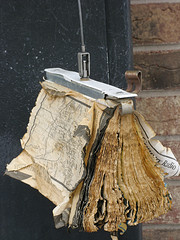 Two dozen students, professors, and visitors gathered in Classics 110 for the event. The participants were Crane; Aleksandar Hemon, author of two critically acclaimed novels and regular contributor to magazines such as the New Yorker; and Stuart Dybek, known as an expert short-story craftsman, winning a PEN/Malamud Prize for distinguished achievement and an O. Henry award. The three writers have been tag-team teaching an invitation-only seminar for ten advanced fiction writers at the U of C this quarter.
Two dozen students, professors, and visitors gathered in Classics 110 for the event. The participants were Crane; Aleksandar Hemon, author of two critically acclaimed novels and regular contributor to magazines such as the New Yorker; and Stuart Dybek, known as an expert short-story craftsman, winning a PEN/Malamud Prize for distinguished achievement and an O. Henry award. The three writers have been tag-team teaching an invitation-only seminar for ten advanced fiction writers at the U of C this quarter. After college you earned PhD in European history at UCLA. When did you move back to Hyde Park?
After college you earned PhD in European history at UCLA. When did you move back to Hyde Park? In early 2006. I graduated in 1991, and when I came back to Chicago a decade later, the only thing that had changed about Hyde Park was that it had a Starbucks.
In early 2006. I graduated in 1991, and when I came back to Chicago a decade later, the only thing that had changed about Hyde Park was that it had a Starbucks.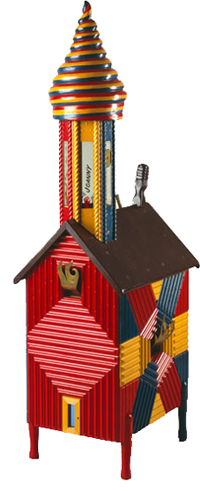 The big idea behind the University of Chicago’s model for urban elementary schooling is that every child should be engaged in ambitious, intellectual work. Students of all ages and in every school—public, charter, or private—should pose questions, scrutinize answers, and explore new ways of thinking. Last week, tagging along with third-graders from Beasley Academic Center on a tour of the Smart Museum of Art, I saw theory in action.
The big idea behind the University of Chicago’s model for urban elementary schooling is that every child should be engaged in ambitious, intellectual work. Students of all ages and in every school—public, charter, or private—should pose questions, scrutinize answers, and explore new ways of thinking. Last week, tagging along with third-graders from Beasley Academic Center on a tour of the Smart Museum of Art, I saw theory in action.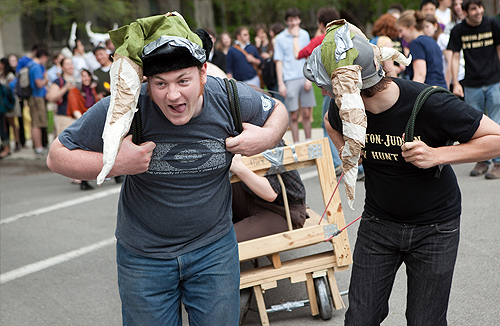
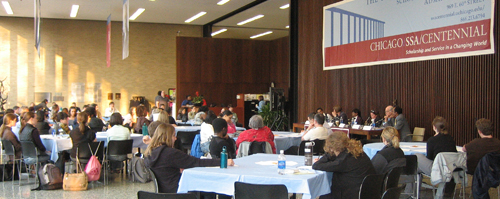
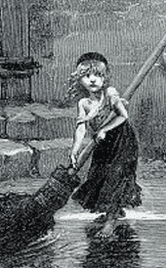 Students and faculty milled about ex Libris last Thursday, exchanging greetings while pouring glasses of Bordeaux and filling their plates with bread and cheese. The evening was à la mode française, and appropriately so: the minglers were there to kick off a marathon reading of Victor Hugo’s Les Misérables, a benefit running through tomorrow, with proceeds going to
Students and faculty milled about ex Libris last Thursday, exchanging greetings while pouring glasses of Bordeaux and filling their plates with bread and cheese. The evening was à la mode française, and appropriately so: the minglers were there to kick off a marathon reading of Victor Hugo’s Les Misérables, a benefit running through tomorrow, with proceeds going to 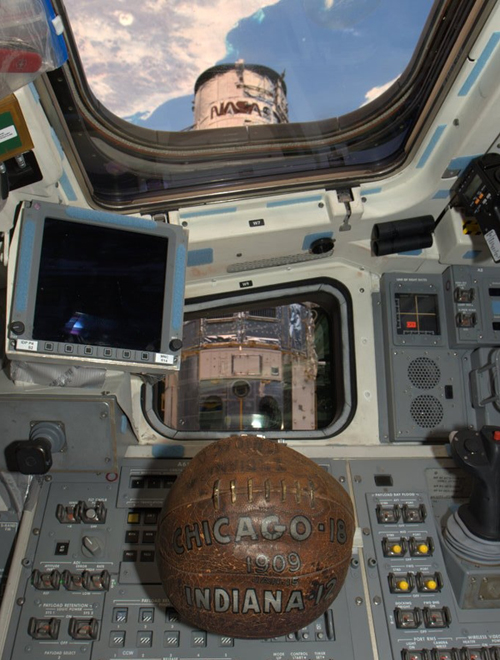
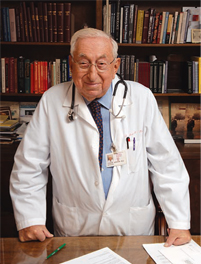 It is a truth universally acknowledged that when celebrating someone's 100th birthday, it is not unwise to start a little early. Doctors, especially, know this.
It is a truth universally acknowledged that when celebrating someone's 100th birthday, it is not unwise to start a little early. Doctors, especially, know this.
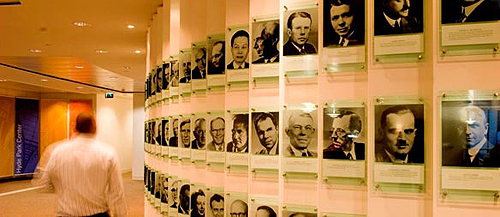

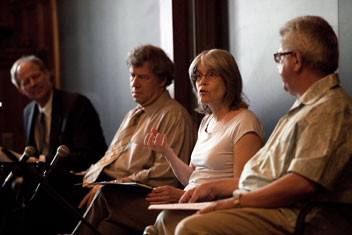 “There is always the question of how one maintains an environment where free speech and free expression can flourish,” Hansen said, “in a community that deeply values openness and mutual respect as well.”
“There is always the question of how one maintains an environment where free speech and free expression can flourish,” Hansen said, “in a community that deeply values openness and mutual respect as well.”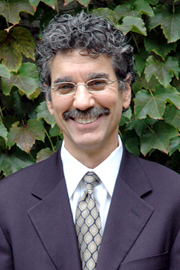 Social neuroscientist John Cacioppo is kind of a big deal in his field. Without his own work, Cacioppo couldn’t even be called a social neuroscientist. His 1992 American Psychologist article coined the name of the discipline, which examines how the brain and social behaviors affect each other.
Social neuroscientist John Cacioppo is kind of a big deal in his field. Without his own work, Cacioppo couldn’t even be called a social neuroscientist. His 1992 American Psychologist article coined the name of the discipline, which examines how the brain and social behaviors affect each other.